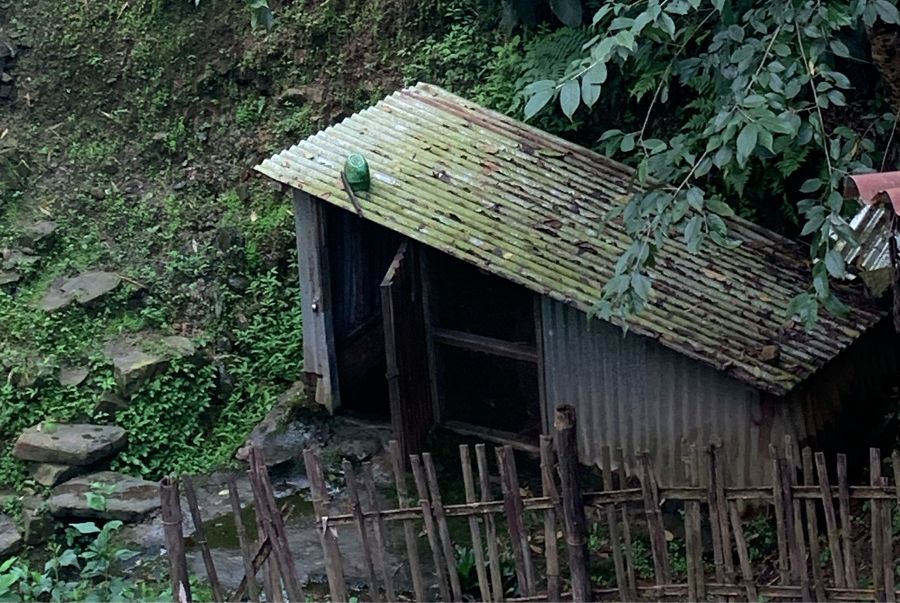SATURDAY, AUGUST 02, 2025
- Home
- Water shortage persists in Kohima amid growing demand
Water shortage persists in Kohima amid growing demand
Kohima continues to face severe water shortages as demand rises and infrastructure struggles to meet basic public needs.
Published on Jul 30, 2025
By EMN
Share
Inotoli Chishi

DIMAPUR — Kohima is no stranger to the harsh realities of water scarcity. The availability of clean and accessible water continues to shrink, driven by a growing population and fluctuating climatic conditions in the city.
Speaking to Eastern Mirror, the Executive Engineer of Public Health Engineering department (PHED) Urban Division Kohima, Neihoukholie Chielie, said factors such as population growth, urbanisation, lifestyle changes, and increased economic activity are contributing to rising demand for water, even as sources remain limited. He pointed out that this mismatch poses major challenges in expanding water supply coverage.
Chielie also mentioned that around 25–30% of water is wasted due to leakages. “Ageing infrastructure, pilferages by human intervention, and developmental works that impact these infrastructures cause leakages. Of late, overloaded vehicles plying over the buried pipes have also led to frequent pipe bursts,” he said.
He estimated that only about 30% of municipal areas receive a regular water supply, and just 20–25% of the population has access to tap water.
A resident of Electrical colony said they had to pay INR 8,000 to register with a private water supplier and INR 1,000 a month to receive water for just an hour on four days a week. Another resident said they spent between INR 1,200 and INR 2,400 a month to purchase water from tankers.
A resident of Middle D block, Ria, said water scarcity has become the norm. 'The government installed pipelines saying we would get water, but it’s been a year and we’re still waiting,' she said. Her family fetches water from a nearby well, but it dries up in winter as groundwater recharge slows.
Also read: Geo-technical report must for all projects in Nagaland—Neiphiu Rio
Another resident of Electrical colony recalled the COVID-19 lockdown: “We skipped meals because there was no water. It was difficult to go out and fetch water with the virus spreading. Sometimes, we had to manage with just a 20-litre bucket to cook for the day.” She said the situation has improved slightly but remains difficult.
“A lot of times, I’ve faced water scarcity as a temporary tenant. Since we cannot purchase large water storage containers, if our owners don’t provide water, we’re left with nothing,” said a resident of Sepfuzou colony. She also mentioned that the situation worsens between November and March.
Residents rely on alternatives
Government water supply is insufficient to meet public demand, and many residents without access to pipeline connections rely on alternatives such as rainwater, private water tankers, ponds, or even water leaking from pipelines. In some cases, people resort to collecting water from polluted nullahs to survive lean periods.
While alarming, such actions reflect the severity of the water crisis and the impact of inadequate waste disposal systems. Some residents also reportedly borrow water from neighbours to meet basic needs.
“For doing a week’s laundry, since there’s no water at home, we go to my friend’s house because they have a well, or to streams that are far from where I live. It’s not easy—going somewhere just to wash clothes—but it has become our lifestyle. We have to get accustomed to our dire situation,” said one resident.
Rainwater is used to meet daily needs. However, in a densely populated city, the rainwater is often contaminated and cannot be consumed. Locals therefore use it for cleaning and watering plants. To conserve water, the water used for washing dishes and clothes is also repurposed for flushing toilets, drainage, and watering plants.
Impact on sanitation
Garbage and kitchen waste are often discarded in sewers, blocking large drainage systems. These are cleared only during heavy rainfall, raising concerns as the accumulated waste invites disease-carrying pests on other days. Sanitation in homes, offices, public toilets, and even hospitals is often found wanting due to water shortages. Public toilets frequently emit unpleasant odours and are stained with grime, causing distress to users.
Read Exclusive: Rag pickers play vital yet unrecognised role in Nagaland’s waste management
Water sources are deteriorating, and the daily damage to water supply infrastructure only worsens the situation, making it increasingly difficult to maintain reliable distribution.
“I’m so done dealing with water scarcity every day. Trying to meet our daily water requirements is exhausting. I become sensitive whenever the topic is about water,” said an exhausted resident of Forest Colony.
(Inotoli Chishi is a student of Economics at Tetso College, Chümoukedima, and currently interning with Eastern Mirror).

